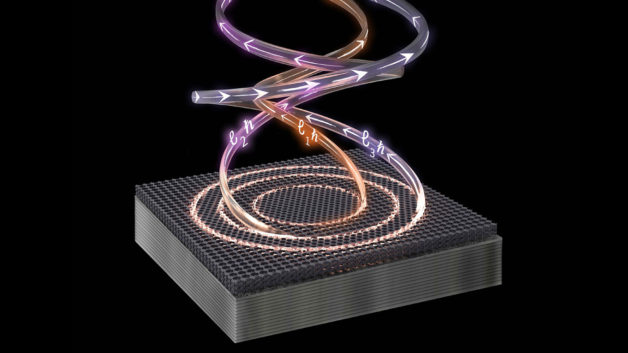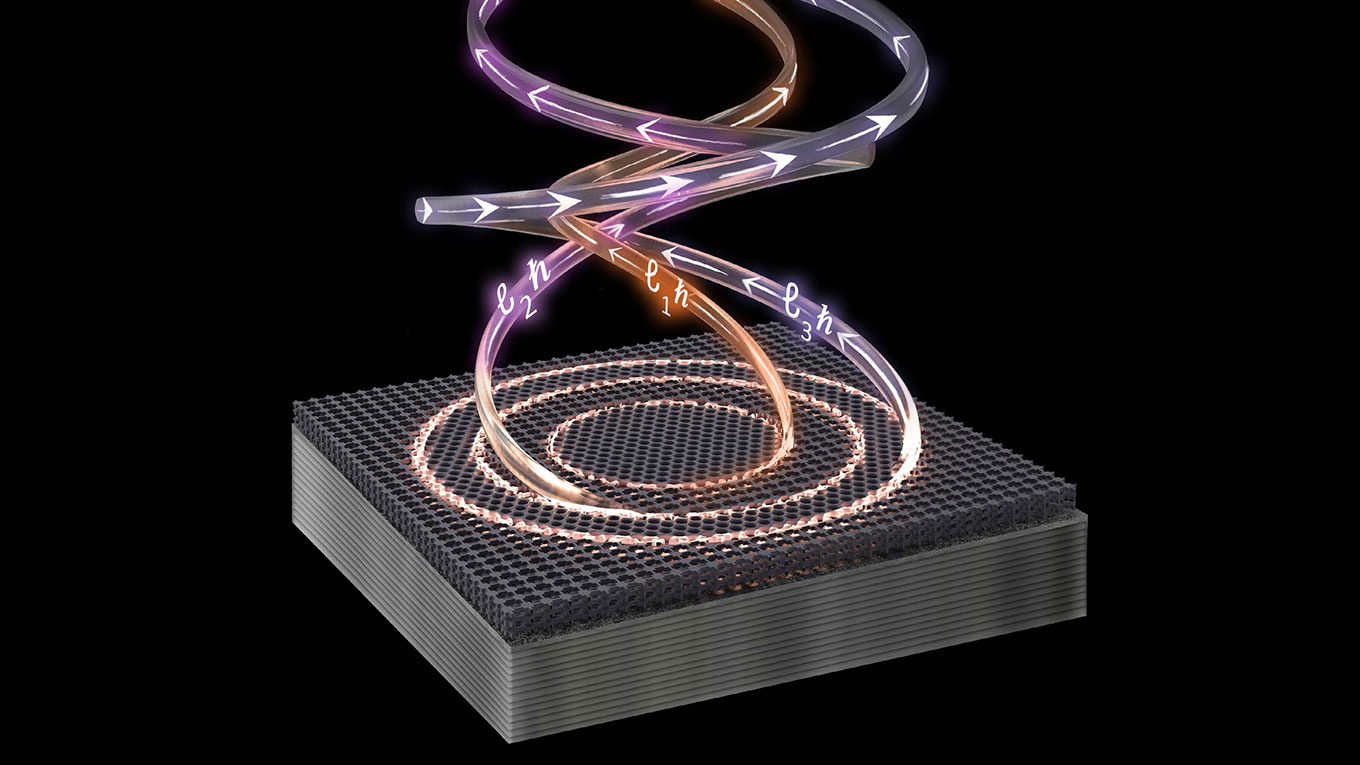
Schematic of multiplexed antennas emitting coherent light. The technology could overcome current data capacity limits. (Courtesy of Kanté Group, UC Berkeley)
Adapted from UC Berkeley news release by Sarah Yang
Researchers at Berkeley Lab and UC Berkeley have found a new way to harness properties of lightwaves that can radically increase the amount of data they carry. They demonstrated the emission of discrete twisting laser beams from antennas made up of concentric rings roughly equal to the diameter of a human hair, small enough to be placed on computer chips.
The new work, reported in a paper published Feb. 25 in the journal Nature Physics, throws wide open the amount of information that can be multiplexed, or simultaneously transmitted, by a coherent light source. A common example of multiplexing is the transmission of multiple telephone calls over a single wire, but there had been fundamental limits to the number of coherent twisted lightwaves that could be directly multiplexed.
“It’s the first time that lasers producing twisted light have been directly multiplexed,” said senior author Boubacar Kanté, a faculty scientist in Berkeley Lab’s Materials Sciences Division and the Chenming Hu Associate Professor in UC Berkeley’s Department of Electrical Engineering and Computer Sciences. “We’ve been experiencing an explosion of data in our world, and the communication channels we have now will soon be insufficient for what we need. The technology we are reporting overcomes current data capacity limits through a characteristic of light called the orbital angular momentum. It is a game-changer with applications in biological imaging, quantum cryptography, high-capacity communications, and sensors.”
Read the full UC Berkeley release here.
